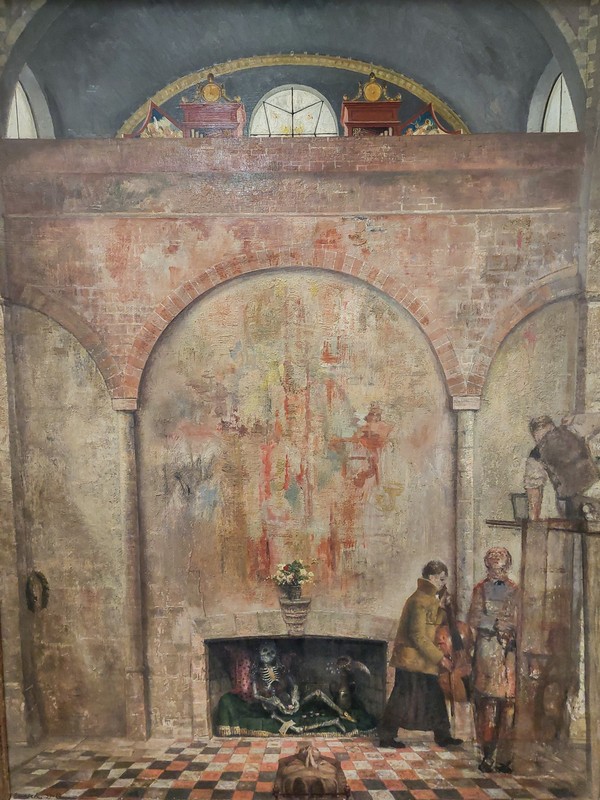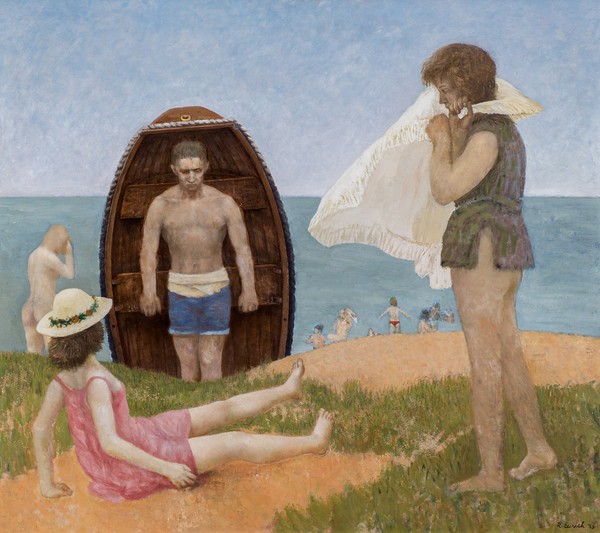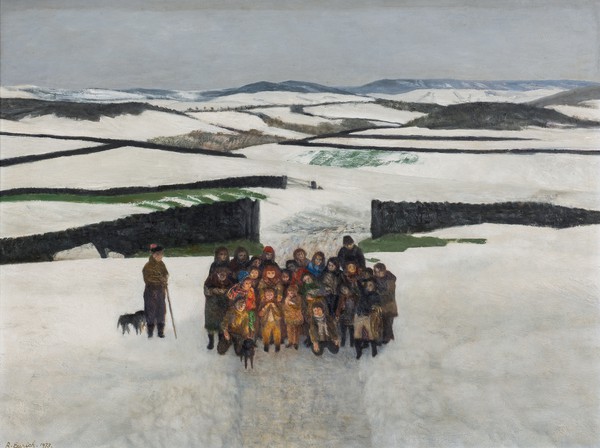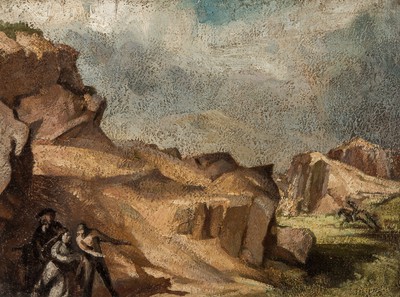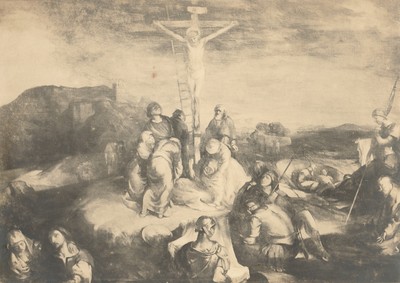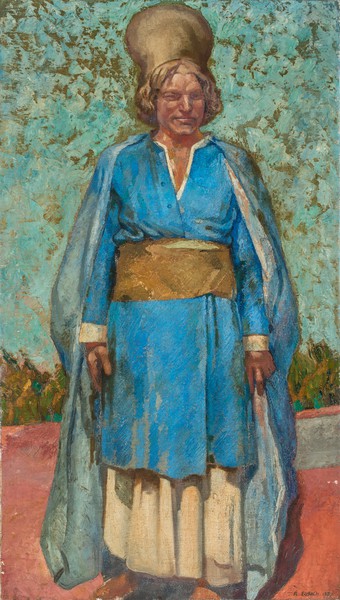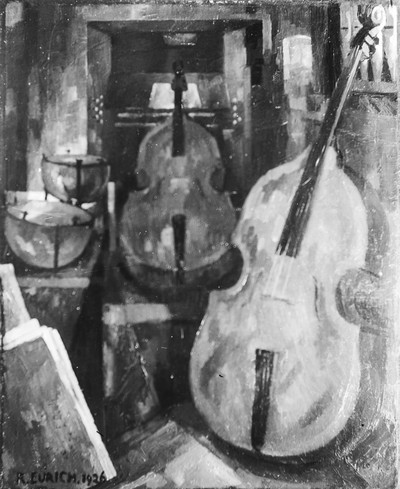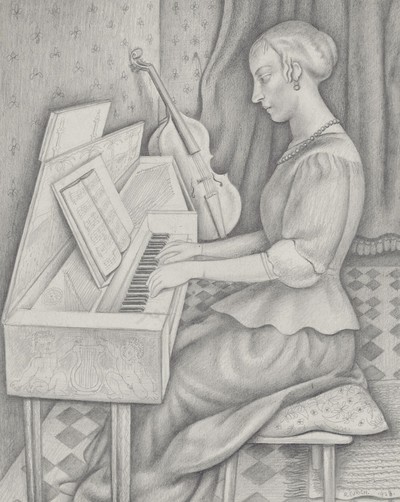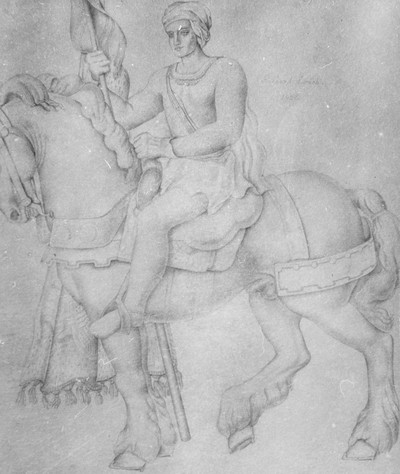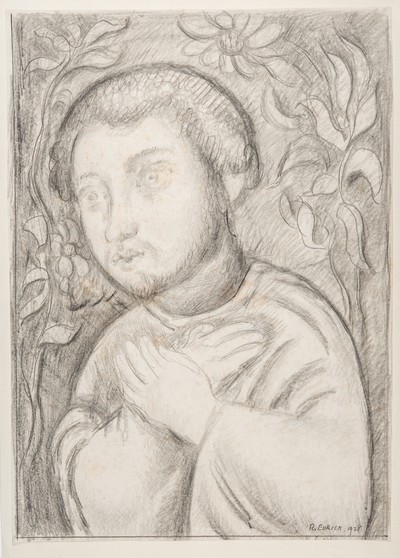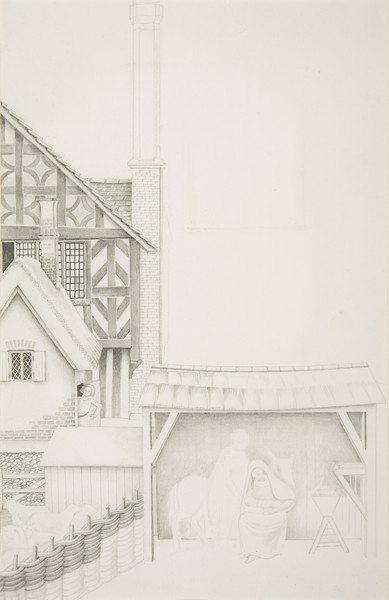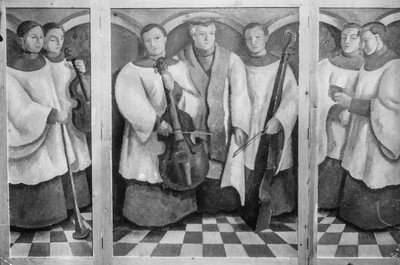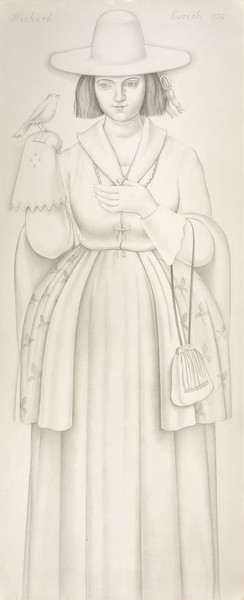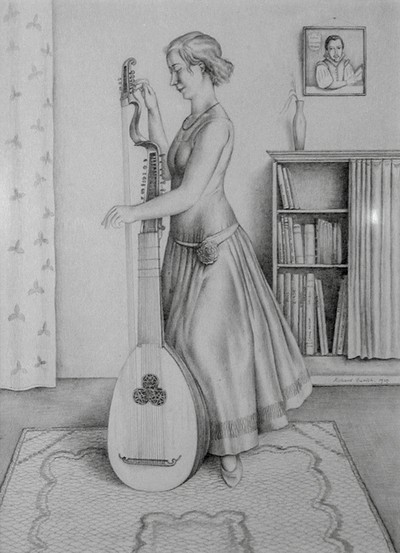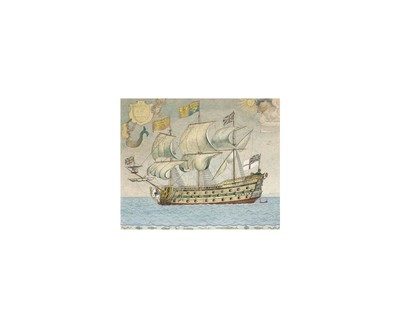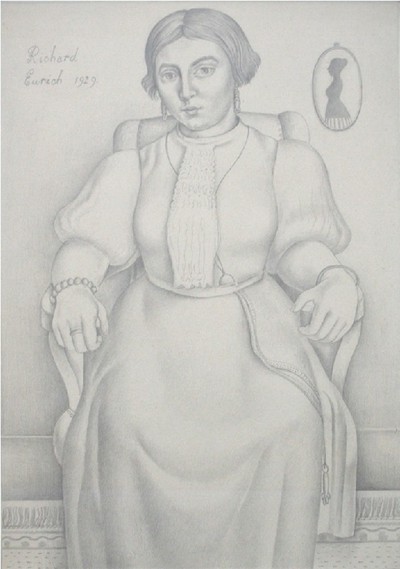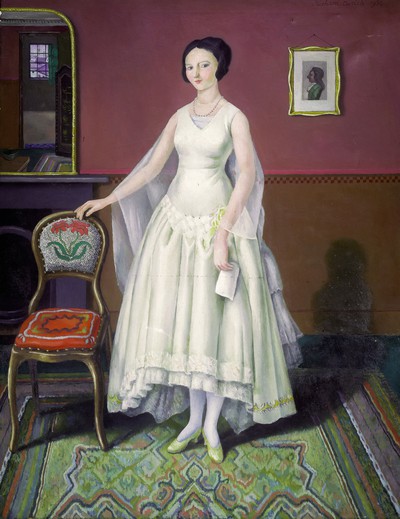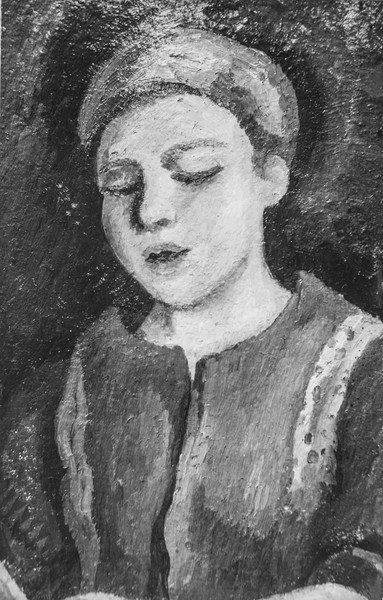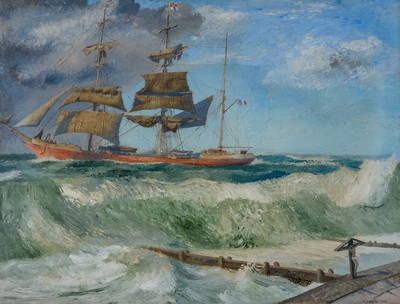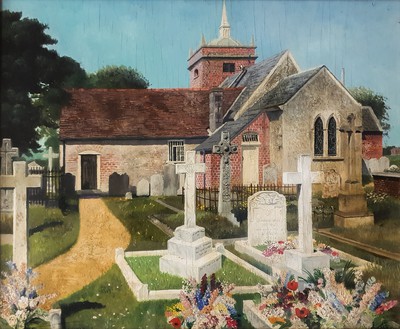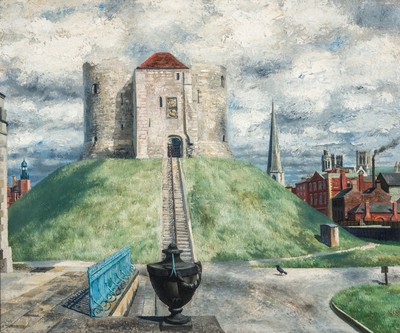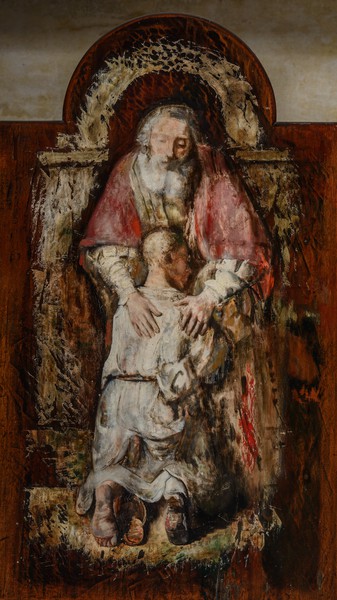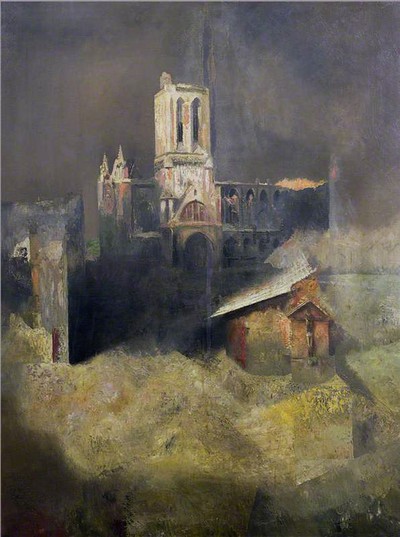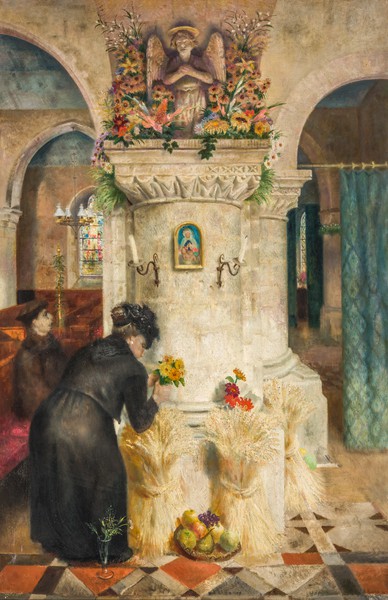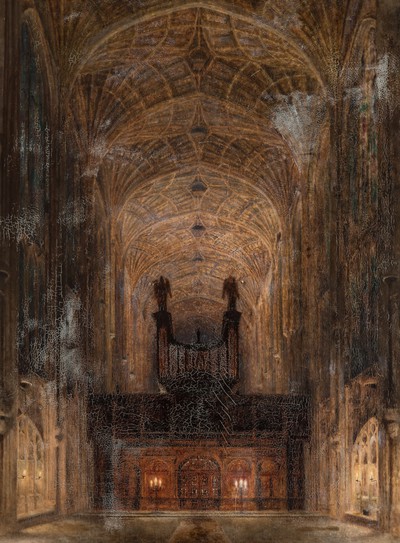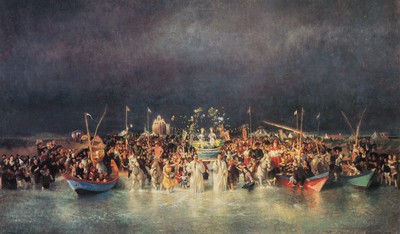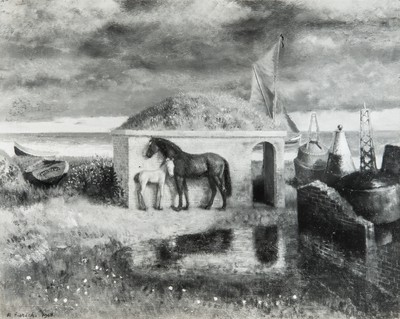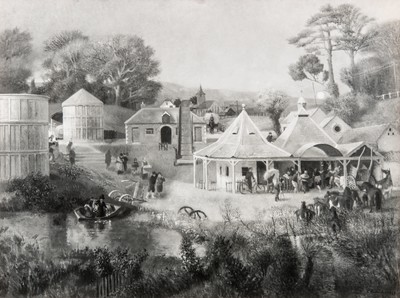The Rose (1959-60)
When I was a child we often drove up to stay with Dad’s sister near York. On the journey we would make small detours guided by John Betjeman’s Guide to English Parish Churches. Often these churches had the remains of an early wall painting or monuments and relics though I don’t remember seeing a skeleton like this one! The musician and the workmen are concerned with the here and now, and their activity contrasts with the stillness of the ancient remains and the unexplained rose.
The Mandala (1969)
The Mandala was originally a Hindu concept developed and overlaid by many civilisations and religions. Here it is a symbol of deity suggested by the shape of the boat and invites us to consider the man who is framed by it to be someone out of the ordinary, perhaps reminiscent of Christ carrying the cross. The women are equally strange in a different way, expressing movement in contrast to his stately progress.
The Epiphany (1973)
Originally supposed to be the Church calendar date of the arrival of the Wise Men at the scene of the Nativity, but transformed here. A gathering of local families from the Yorkshire Wolds has crossed the snowy landscape to be present, but not too close to this event. Nothing is overtly stated but the glow of a certain hope is reflected in the faces.
